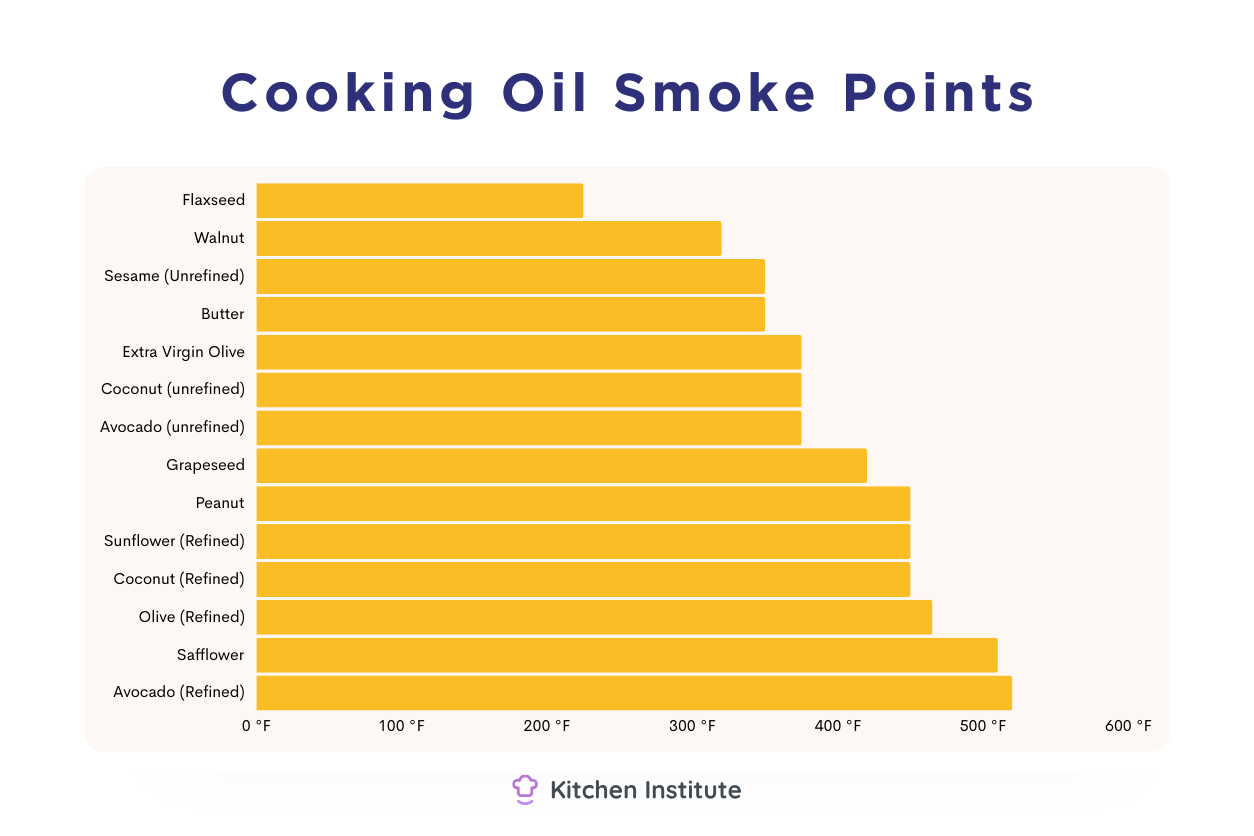Which Oils Are the Safest to Cook With?

Cooking can feel like a delicate balance between science and art. One minute, you’re happily sautéing vegetables, and the next, your kitchen is filled with smoke because you overheated the oil. It’s a common mistake—one that happens to the best of us—and it often comes down to not knowing which oil to use for the job. Some cooking oils can handle high heat without a problem, while others break down quickly, ruining both your meal and the flavor you were aiming for. But it’s not just about taste. The type of oil you choose can impact the nutritional value of your dish, as well as the health of those who eat it. Let’s find the best frying oil with the highest smoke point.
Why Does Smoke Point Matter?
The term “smoke point” refers to the temperature at which oil begins to produce visible smoke. When oil surpasses its smoke point, it starts to break down chemically. This not only affects the flavor—making it bitter—but also destroys many of the nutrients and releases harmful substances, such as acrolein, which gives burnt food its characteristic unpleasant taste and can irritate the eyes and lungs.
More importantly, cooking oils that exceed their smoke points can release free radicals and harmful compounds, potentially increasing the risk of various health issues when consumed over time. That’s why it’s essential to match your cooking oil with the method you’re using. Low-heat oils are perfect for gentle cooking or dressings, while higher smoke point oils can handle intense heat, like deep-frying or searing.

Low Smoke Point Oils
Flaxseed Oil
Flaxseed oil smoke point: 225°F
Flaxseed oil is incredibly delicate and should never be heated. It’s best used for drizzling over salads, blending into smoothies, or adding to cold dishes. Its high omega-3 content is a nutritional boost, but heat can easily damage it, so keep this oil raw.
Walnut Oil
Walnut oil smoke point: 320°F
With a nutty flavor that pairs beautifully with roasted vegetables or salads, walnut oil is another one best suited for cold dishes or low-heat cooking. Heating walnut oil can diminish its flavor and health benefits, so it’s often used as a finishing oil rather than for sautéing.
Unrefined Sunflower Oil
Unrefined sunflower oil smoke point: 320°F
Unrefined sunflower oil retains many nutrients and has a mild, nutty taste. It’s best suited for salad dressings or low-heat cooking like gentle sautéing. However, it’s not suitable for frying or grilling because of its low smoke point.
Unrefined Almond Oil
Unrefined almond oil smoke point: 225°F
Almond oil is a sweet, delicate option, often used in desserts or drizzled over finished dishes for a hint of nutty flavor. Its very low smoke point makes it unsuitable for any cooking with heat, but it’s perfect for cold dishes or adding to smoothies.
Medium Smoke Point Oils
Extra Virgin Olive Oil
Extra virgin olive oil smoke point: 375°F
Olive oil is a kitchen staple with a rich, fruity flavor and loads of antioxidants. It’s perfect for medium-heat cooking like sautéing or for use in dressings and dips. However, avoid using it for frying since its lower smoke point means it will burn and become bitter under high heat.
Unrefined Coconut Oil
Unrefined coconut oil smoke point: 375°F
Unrefined coconut oil has a distinctive coconut flavor and works well in medium-heat cooking like light sautéing or baking. Its higher saturated fat content makes it stable for cooking at moderate temperatures, but it’s not ideal for high-heat frying.
Grapeseed Oil
Grapeseed oil smoke point: 420°F
A neutral oil with a mild flavor, grapeseed oil works well for sautéing and frying at medium-high heat. It’s also frequently used in emulsified sauces like mayonnaise or vinaigrettes, thanks to its light texture. Avoid using it for long-term high-heat applications, as it can oxidize.
Refined Sesame Oil
Refined sesame oil smoke point: 425°F
Refined sesame oil has a much milder flavor compared to its unrefined counterpart and can handle higher heat. It’s commonly used in stir-frying and pan-frying, especially in Asian cuisine. However, for deep-frying, there are more cost-effective options.
High Smoke Point Oils
Peanut Oil
Peanut oil smoke point: 450°F
Peanut oil is often used in Asian recipes because it handles high heat exceptionally well, making it perfect for stir-frying and deep-frying. Its subtle nutty flavor is a great match for dishes like tempura or crispy fried chicken.
Refined Avocado Oil
Refined avocado oil smoke point: 520°F
Refined avocado oil has one of the highest smoke points of all cooking oils, making it ideal for grilling, deep-frying, or stir-frying at high temperatures. Its neutral flavor won’t overpower your dishes, and it’s incredibly versatile in the kitchen.
Refined Sunflower Oil
Refined sunflower oil smoke point: 500°F
A versatile option, refined sunflower oil has a light, neutral flavor and a high smoke point, making it great for frying, baking, or roasting vegetables and meats. Its stability at high temperatures ensures your food cooks evenly without burning.
Refined Coconut Oil
Refined coconut oil smoke point: 475°F
Unlike unrefined coconut oil, refined coconut oil has a neutral taste and a higher smoke point, making it suitable for high-heat cooking like frying, sautéing, and baking. If you prefer cooking without the coconut flavor, this version is your go-to option.
Our Recipe for Trust: Why Choose Kitchen Institute
At the Kitchen Institute, we're dedicated to providing reliable and accurate information on cooking trends, tips, and product reviews. Our team of passionate food enthusiasts ensures that every piece of content is thoroughly researched and based on real-world experience. We pride ourselves on our comprehensive and unbiased product reviews, rigorous research processes, and commitment to staying current with the latest culinary innovations. Trust us to enhance your culinary journey with quality insights and practical advice.